
Phragmites is a genus of four species of large perennial reed grasses found in wetlands throughout temperate and tropical regions of the world.
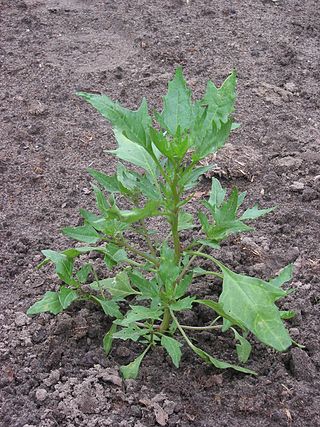
Oxybasis rubra, common names red goosefoot or coastblite goosefoot, is a member of the genus Oxybasis, a segregate of Chenopodium. It is native to North America and Eurasia. It is an annual plant.

Phragmites australis, known as the common reed, is a species of flowering plant in the grass family Poaceae. It is a wetland grass that can grow up to 20 feet tall and has a cosmopolitan distribution worldwide.
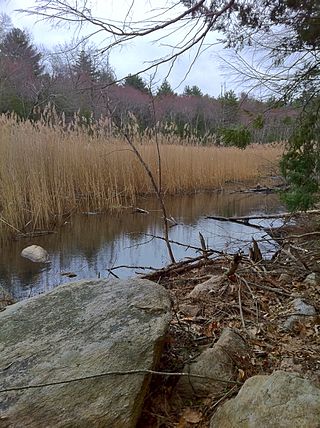
Old Furnace State Park is a public recreation area adjacent to Ross Pond State Park in the town of Killingly, Connecticut. The state parks covers 367 acres (149 ha), sits at an elevation of 390 feet (120 m), and is open year-round for hiking, hunting, and fishing. It is located east of Interstate 395, south of U.S. Route 6 and north of Connecticut Route 695. The park is the site of a former iron furnace. It was established as a town park in 1909 before being transferred to the state in 1918.
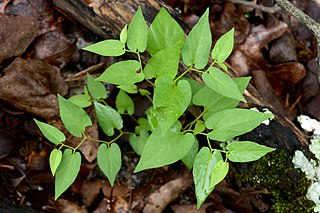
Aristolochia serpentaria is a species of perennial flowering plant in the Aristolochiaceae (birthwort) family. The species is commonly known as Virginia snakeroot and is native to eastern North America, from Connecticut to southern Michigan and south to Texas and Florida.

Carex cumulata, common names clustered sedge, piled sedge, and piled-up sedge is a species of Carex native to North America. It is a perennial.

Smilax tamnoides, common name bristly greenbrier, is a North American species of plants native to the United States and Canada. It is widespread from Ontario and New York State south to Texas and Florida.

Solidago latissimifolia, common name Elliott's goldenrod, is North American species of flowering plants in the family Asteraceae. It is native to the Atlantic Coast of the United States and Canada, from Nova Scotia south to Alabama and Florida.
Fishers Brook is a stream that runs for about 4,000 meters at its maximum length in spring. Most of the year, it reaches only 3,000 meters. It is located in Storrs, Connecticut. It feeds several small wetlands, including one small pond, before dropping off into Codfish Falls. It then leads into the Fenton River. Just before the falls, as well as in several other places, it is intersected by small bridges.

Atriplex glabriuscula, common names Scotland orache, smooth orache, Babington's orache or seaside orach is an Atriplex species native to North America and northern Europe. It is an annual.
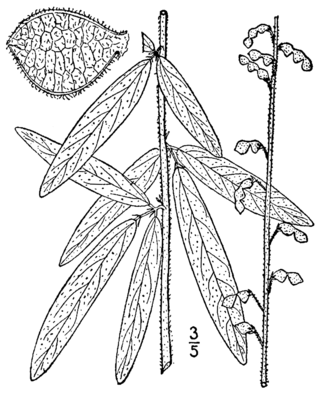
Desmodium sessilifolium, common name sessileleaf ticktrefoil, is a species of plant in the legume family, Fabaceae. It is native to North America.
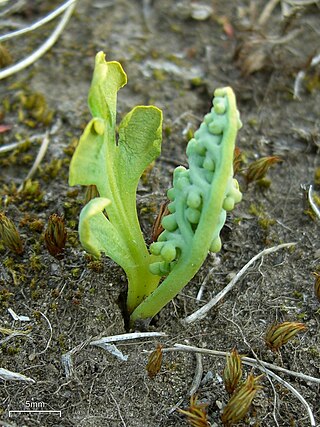
Botrychium simplex, the little grapefern, is a species of fern in the family Ophioglossaceae that is native to North America and Greenland. It is a perennial.

Calystegia spithamaea, which common names include: low false bindweed, low bindweed, erect bindweed, and upright bindweed, is a species of plant found in eastern North America.
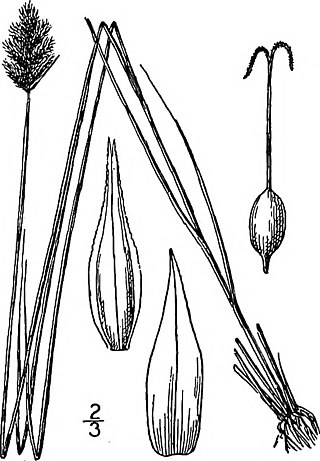
Carex crawfordii, common name Crawford sedge, is a species of Carex native to North America.

Paronychia fastigiata, common names hairy forked chickweed, hairy forked nailwort, and forked chickweed, is an annual plant native to North America.

Carex prairea, common name prairie sedge, is a species of Carex native to North America. It is a perennial.

Carex typhina, common name cattail sedge, is a species of Carex native to North America.

Scleria verticillata, known as low nutrush or whorled nutrush, is a plant in the sedge family Cyperaceae. It is native to Ontario, Canada, the eastern United States, The Bahamas, and Cuba.

Lycopus amplectens, common names clasping-leaved water-horehound, sessile-leaved bugleweed, and sessile-leaved water-horehound, is a species of Lycopus native to North America.

Potamogeton hillii, common name Hill's pondweed, is a species of plant found in North America. It is listed as endangered in Connecticut, Ohio, and Pennsylvania. It is listed as a special concern in Massachusetts and as threatened in Michigan and New York (state).



















